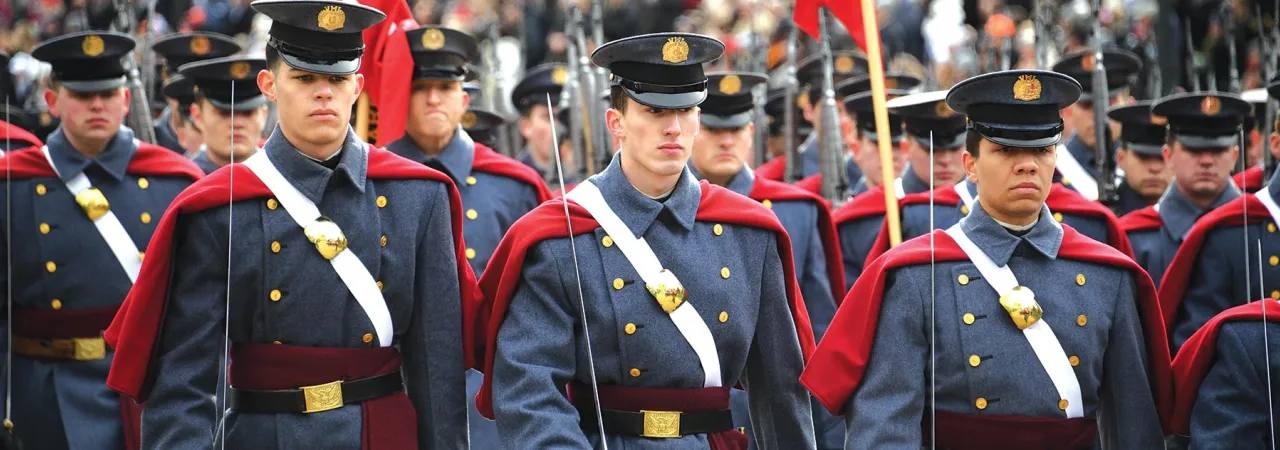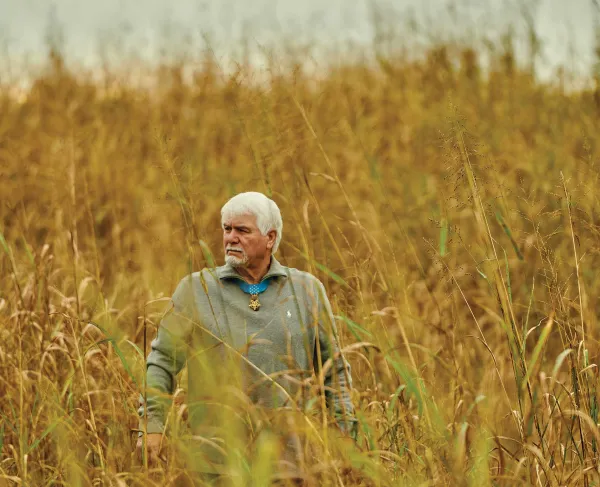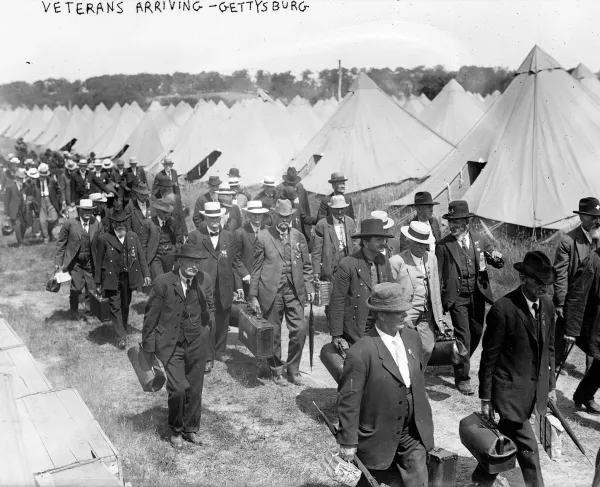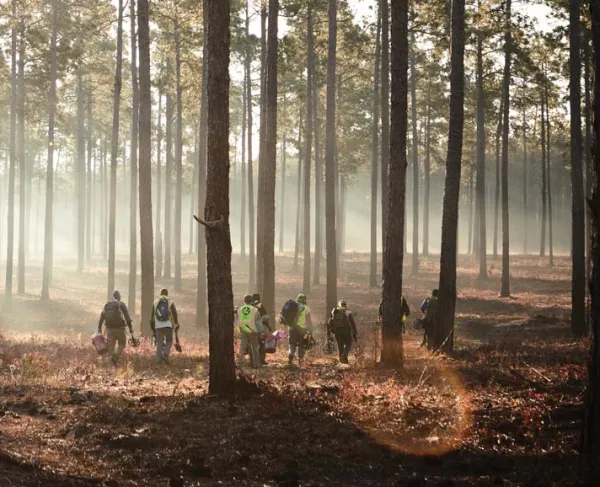Virginia Military Institute in Lexington, Va.

Cadets marching at the Governor’s Inaugural Ceremony.
As part of a series on military service academies, Charles F. Bryan, Jr., Class of 1969 reflects on his experience at and the history of the Virginia Military Institute in Lexington, Va.
With intentions of molding “fair specimens of citizen-soldiers,” the Virginia Military Institute (VMI) was established by the Virginia legislature in March 1839 and opened later that year on the site of the Virginia State Arsenal in Lexington. While the first graduating class in 1842 was made up of 16 cadets, 2021’s Commencement witnessed nearly 350 cadets graduate. I myself graduated in 1969 with a group of 261 “Brother Rats” — so-called because of the trying “rat line” boot camp experience we all went through upon arrival at the Institute.
VMI, for me and many others, marked a period of immense growth. But the school itself has grown much since 1839.
When the Civil War broke out, the Cadet Corps went to Richmond to train Confederate recruits and later re-formed at VMI to furnish officers for the Confederate armies. VMI faculty member Thomas J. Jackson became Confederate Gen. “Stonewall” Jackson, and, when he perished at Chancellorsville, it was the Corps of Cadets that transported his body to his grave in Lexington.
Throughout the war, the Cadet Corps was called into action on 15 occasions in the Valley of Virginia. At the Battle of New Market on May 15, 1864, 257 cadets were organized into a battalion of four companies of infantry and one section of artillery. Six of the cadets who perished there are buried on Institute grounds.
And then, on June 12, 1864, VMI was shelled and burned by Union forces under Gen. David Hunter — you can still see cannon balls from the attack that remain embedded in the exterior walls of the VMI barracks! Remarkably, the Institute reopened the following year, on October 17, 1865.
In the years that followed, VMI was on the rise. In 1912, it replaced its “graduate” degree with a bachelor of arts. During WWI, more than 1,400 alumni served and cadets practiced building trenches at the spot where Foster Stadium now stands. During WWII, it hosted federally operated training programs, and more than 4,000 alumni answered Uncle Sam’s call. By 1968, the school was integrated.
My time at the Institute was during a period of social change in our country. On January 20, 1969, I, along with some 250 of my classmates, represented the Commonwealth of Virginia in the inaugural parade honoring the recently elected President Richard Nixon.
After a great many hours of practice and the anticipation of appearing on national TV, we loaded on to a dozen buses that bone-chilling January 20 morning and arrived four hours later at Bolling Air Force Base. We changed into our overcoats and put on our white cross web belts, only to reboard the buses and assemble near the National Mall.
It wasn’t long before we encountered a large group of anti-war protestors who shouted absurdities at us. But despite their taunts and the delay they caused, we finally formed up behind Virginia Tech’s “Highty Tighty” military marching band and stepped off in a battalion mass formation with our cadet first captain and his regimental staff in the lead. As one newspaper reported, we marched “flawlessly”; we were also treated to an unexpected compliment when President Nixon turned to his family and pointed out the VMI unit. His daughter, Tricia, blew kisses at us as we marched by. A week later, we were met by a full-page cover photograph of parading cadets in LIFE magazine.
That cold day, 54 years ago, has long faded to a warm memory of my youth during troubled times.





